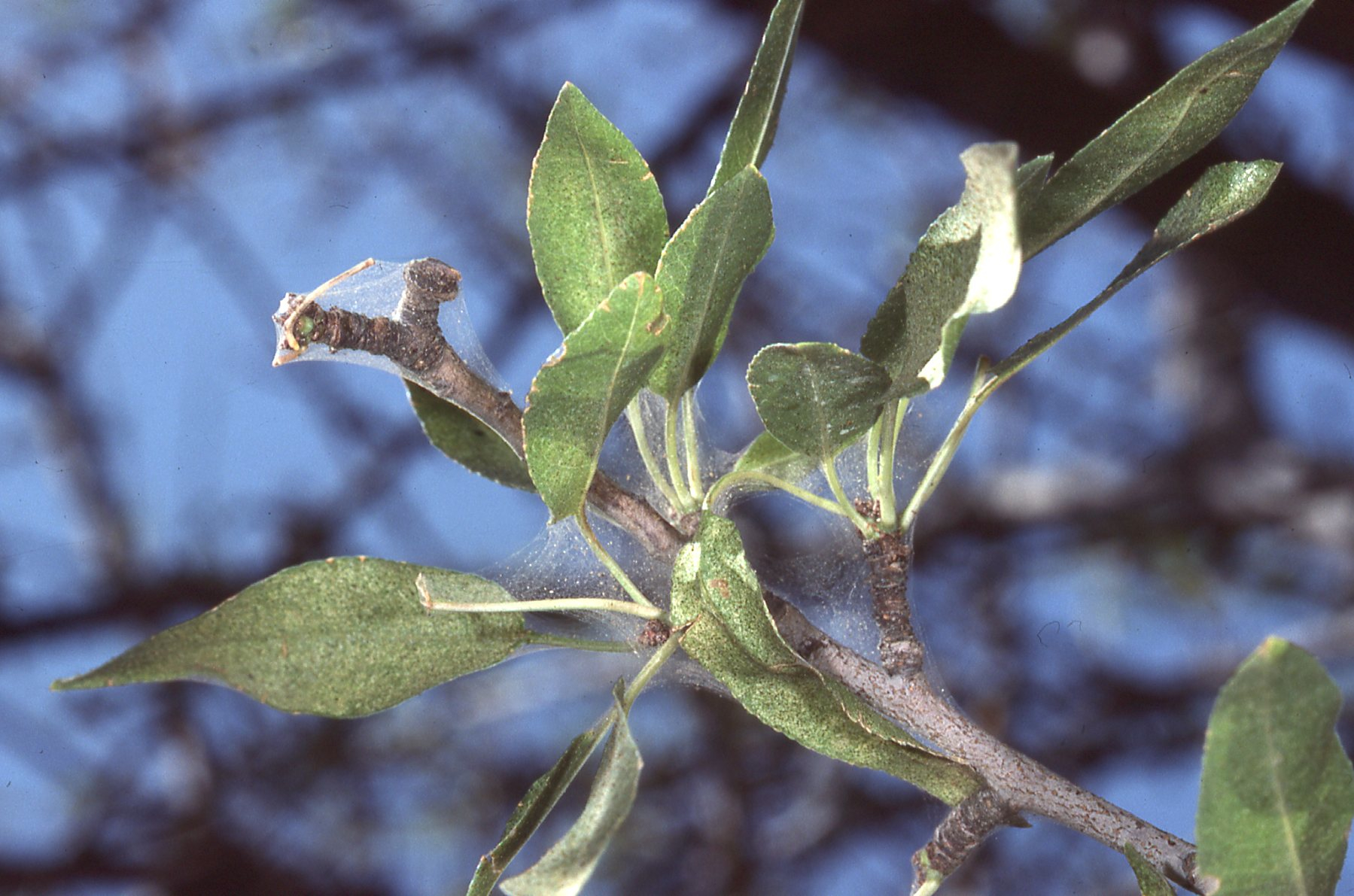
Preserving beneficial mite predator populations can be part of a late season mite management strategy in almonds.
Almond Board funded studies show that avoiding early mite treatments allows beneficial populations to grow and control two-spotted spider mite and Pacific spider mite late season flares. These mite species damage almond tree leaves by sucking out contents of leaf cells, causing them to turn yellow. Severe infestation can cause defoliation.
Sixspotted thrips are the most common and effective natural predator of spider mite species. Other beneficials include minute pirate bugs, lacewings and predatory mites.
University of California Integrated Pest Management specialists recommend weekly monitoring for mites and beneficials through harvest. This involves taking leaf samples from at least five trees in representative areas within the orchard and checking for presence or absence of both spider mites and predators. Hot spots on the edges of the orchard should receive special attention when sampling.
Kern County IPM farm advisor David Haviland recommends use of yellow sticky cards to monitor for the presence of sixspotted thrips in the orchard. These traps can be hung on trees near navel orangeworm traps and can provide a more accurate picture of the presence of sixspotted thrips. He reports there is a direct correlation between the number of thrips found on the card at weekly monitoring and the number of mites found on leaves. As beneficial numbers increase, mite numbers decrease.
Late summer heat and stress can exacerbate mite infestations at one of the busiest times of the year for almond growers as harvest activity can impede sprayer access. Dust generated at harvest can also contribute to mite activity. To reduce the risk of mite damage, dust control strategies are encouraged at harvest.
UC IPM has created a table of almond pesticides and their impact on beneficials, including predatory mites and sixspotted thrips. Using a miticide that is gentle on beneficials helps keep them around to suppress or control spider mites missed by the pesticide – as long as a good spray application is made.
Mite flare-ups in almonds have been observed in both northern and southern growing regions this summer, said pest control advisor Justin Nay of Integral Ag. Growers running conditioners in the orchards are especially experiencing mite flare-ups.
Nay said the mite management program has been changed to have growers treat orchards a week to 10 days before harvest and not sooner in the year. This has been the second year with no preventative spring treatments, Nay said, and it is proving to be successful.












